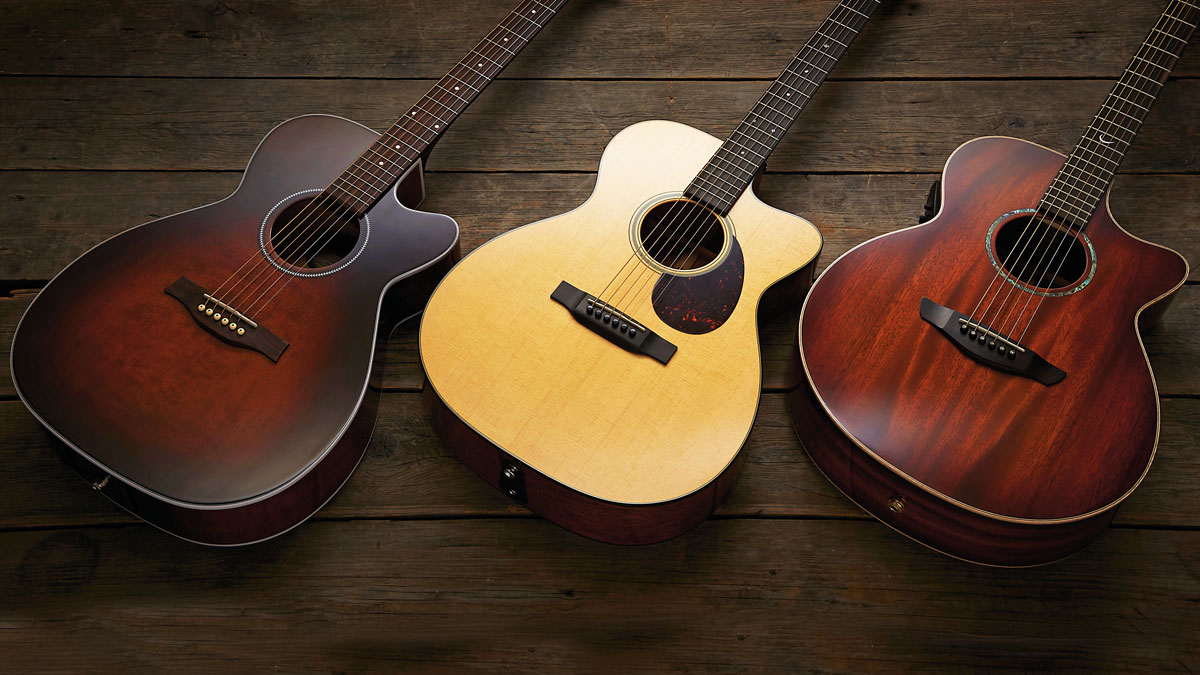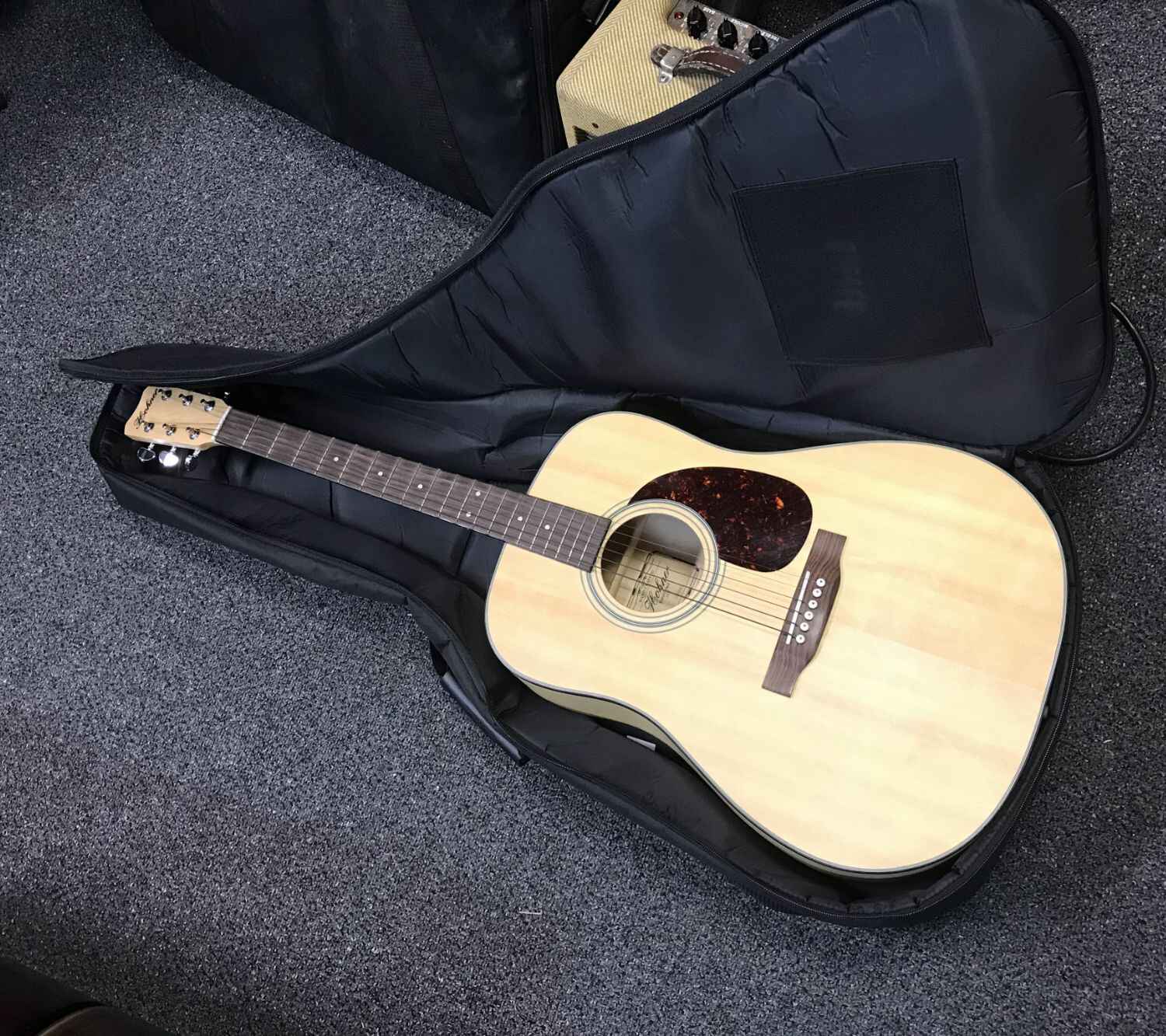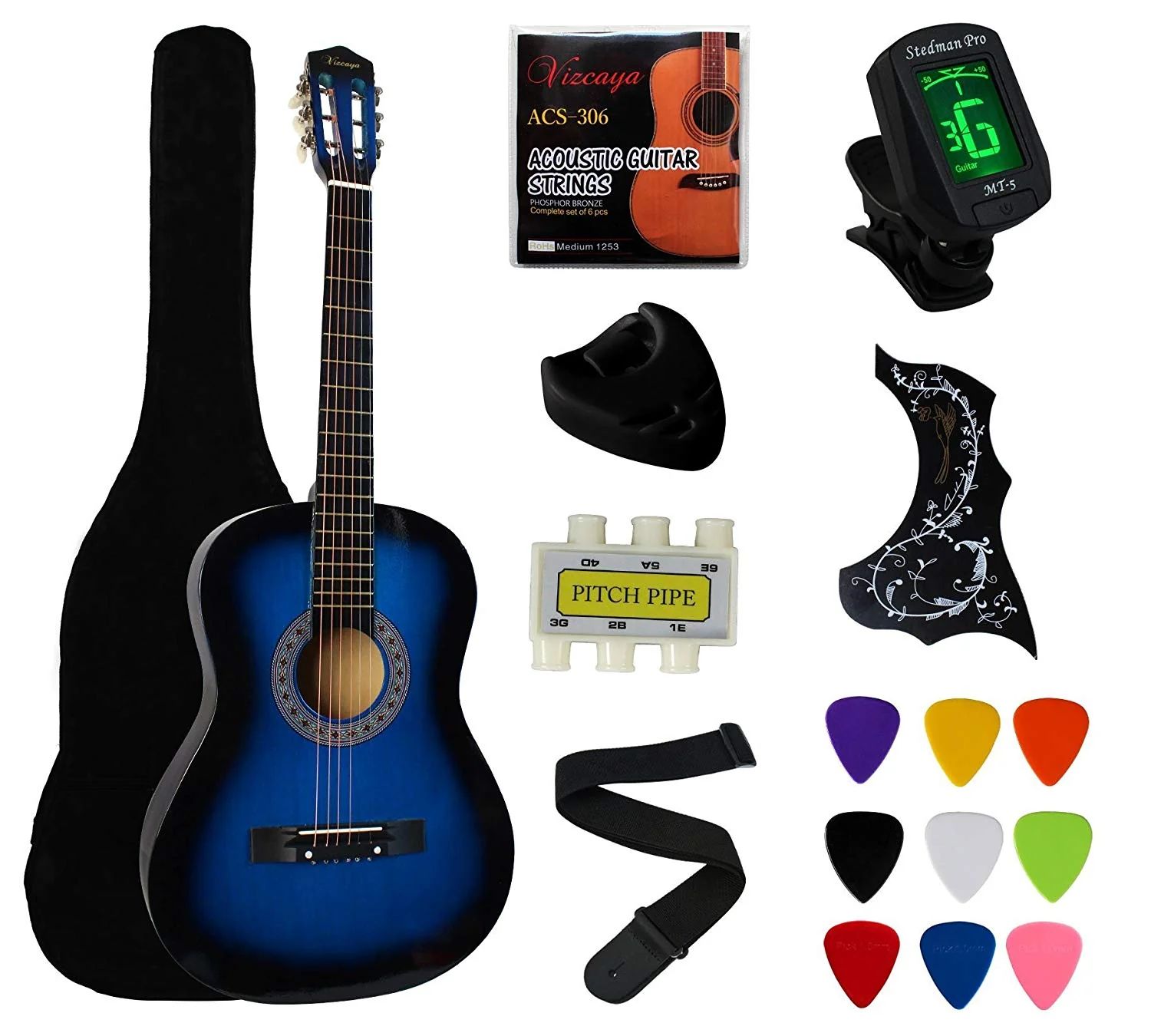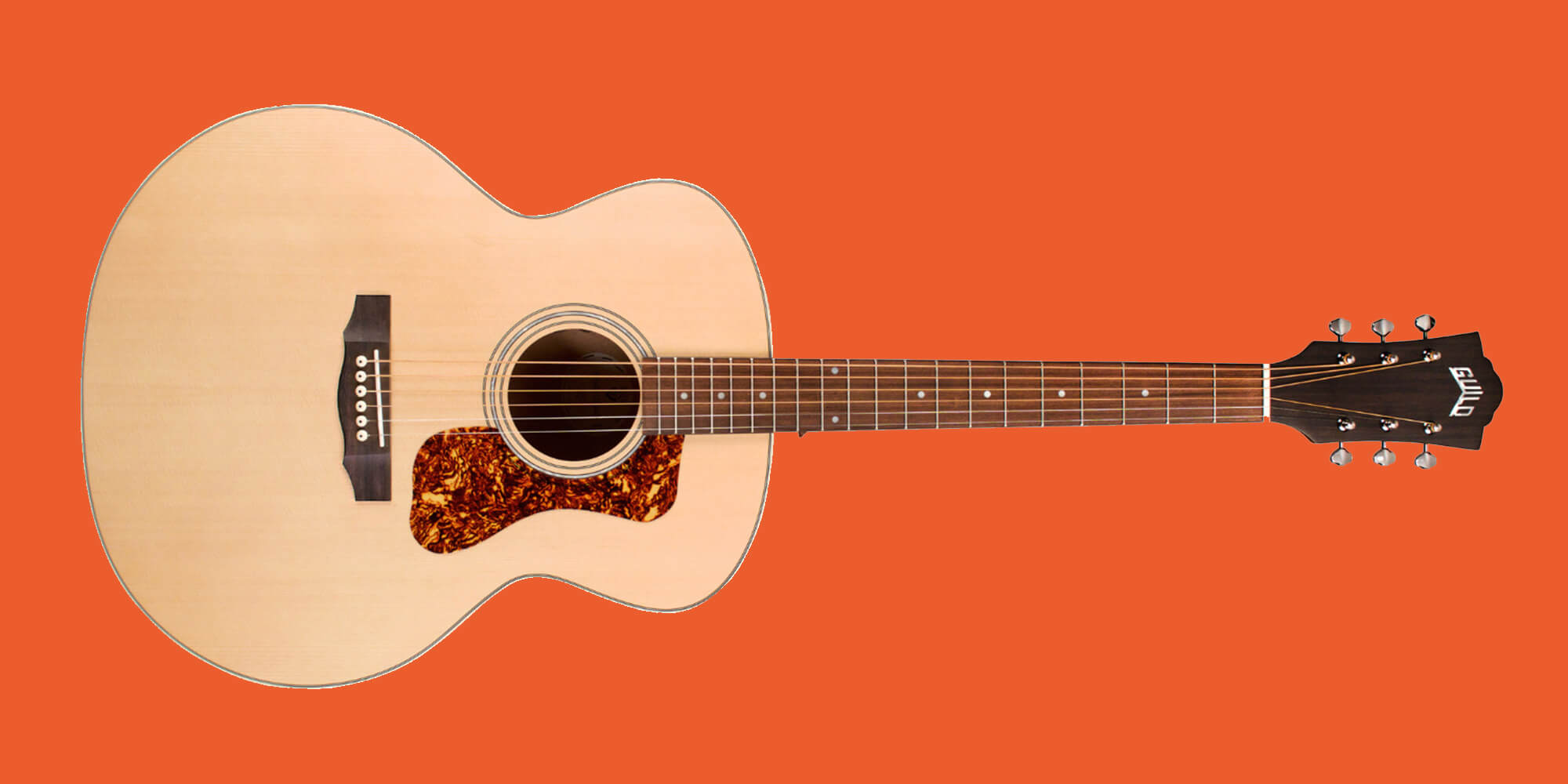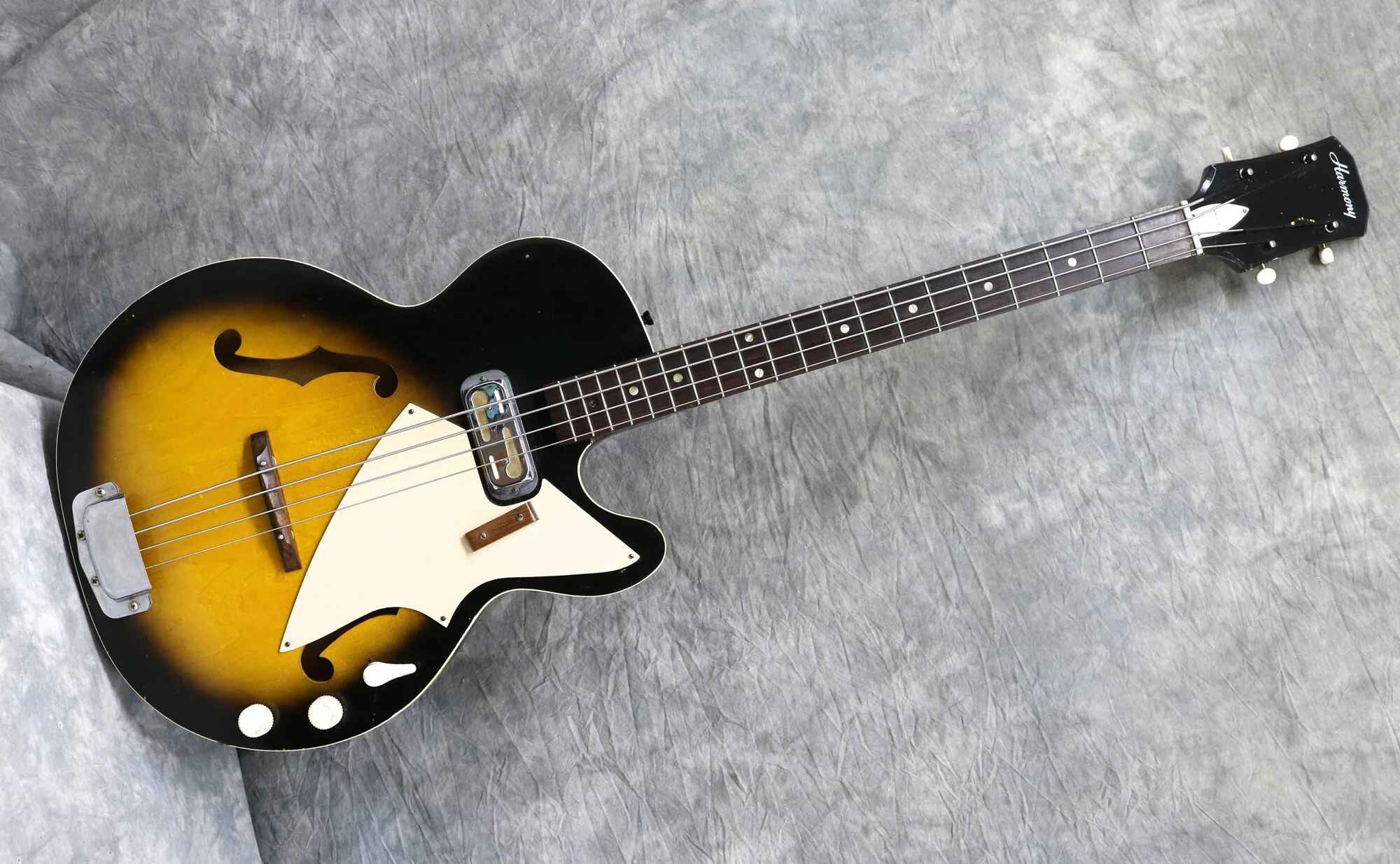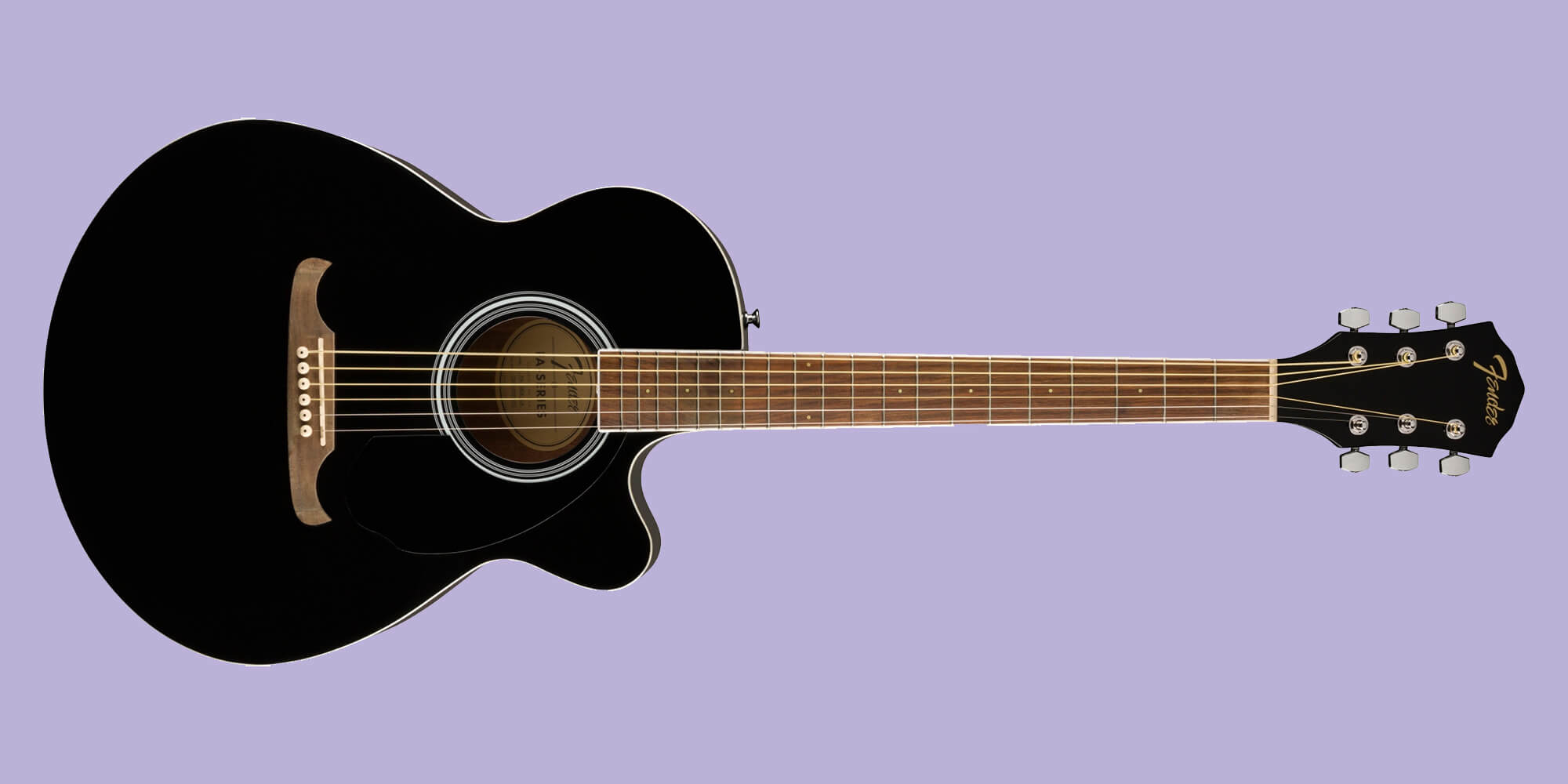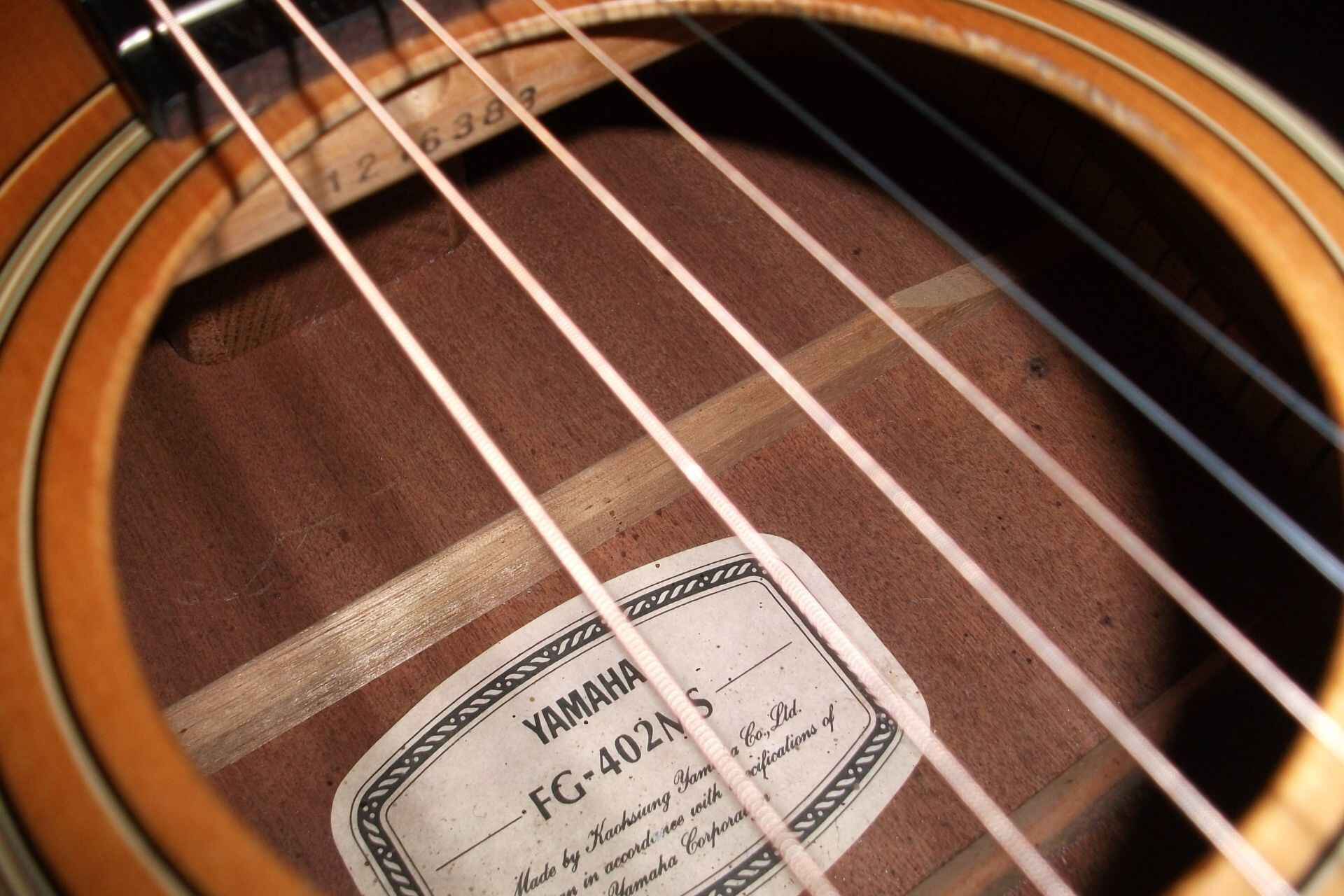Introduction
When it comes to choosing an acoustic guitar, it’s important to find the right one that suits your personal preferences and playing style. Whether you’re a beginner just starting out or a professional musician looking to add a new instrument to your collection, the right acoustic guitar can make all the difference in your music journey.
Selecting the perfect acoustic guitar can be a daunting task, considering the wide array of brands, models, and features available in the market. However, by considering a few key factors, you can narrow down your options and find the acoustic guitar that best meets your needs.
In this article, we will explore the essential factors to consider when choosing an acoustic guitar. From understanding the different body types and wood materials to evaluating your playing style and budget constraints, we will guide you through the decision-making process and provide recommendations for beginners, intermediate players, and professionals.
Whether you’re seeking warm and mellow tones for strumming along to your favorite songs or bright and articulate notes for fingerpicking melodies, finding the right acoustic guitar is essential to achieving your desired sound.
So, let’s dive into the world of acoustic guitars and discover the factors that will help you make an informed decision. Whether you’re a seasoned player or just starting out, this guide will equip you with the knowledge you need to find the perfect acoustic guitar for your musical journey.
Factors to Consider
When choosing an acoustic guitar, there are several factors you should consider to ensure you get the right instrument for your playing style and preferences. These factors will help you narrow down your options and find the acoustic guitar that suits you best. Let’s take a closer look at each one:
1. Body Type: Acoustic guitars come in various body shapes, including dreadnought, concert, auditorium, and parlor. Each body type offers its own unique sound and feel. Consider the size and shape that feels most comfortable to you and produces the sound you desire.
2. Wood Type: The type of wood used in the construction of the guitar greatly affects its tone. Common types of wood include spruce, cedar, mahogany, and rosewood. Each wood imparts its own characteristics, such as warmth or brightness, so choose a wood type that complements your preferred playing style.
3. Playing Style: Your playing style will also influence the type of acoustic guitar you should choose. If you tend to strum chords and play rhythm, a dreadnought or concert body shape may be suitable. On the other hand, if you prefer fingerpicking or playing intricate melodies, a smaller-bodied guitar like a parlor or auditorium might be more appropriate.
4. Budget: Set a budget for your acoustic guitar purchase. There are options available at different price ranges, from budget-friendly to high-end guitars. Consider your budget carefully and prioritize the features and quality that matter most to you.
5. Sound and Tone: Every acoustic guitar has its own unique sound and tone. Play different guitars to get a sense of their tonal qualities and find the one that resonates with you.
6. Brand and Reputation: Research different guitar brands and read reviews to gauge their reputation and quality. Well-established brands often have a track record of producing reliable and high-quality instruments.
7. Playability and Comfort: It’s essential to choose an acoustic guitar that feels comfortable to play. Consider factors such as the neck profile, string action, and overall ergonomics of the instrument.
By taking these factors into account, you can narrow down your choices and find the acoustic guitar that matches your preferences, playing style, and budget. Remember, finding the right guitar is a personal journey, so take your time, do your research, and trust your instincts.
Body Type
When selecting an acoustic guitar, the body type is an important factor to consider. The body shape not only affects the guitar’s overall appearance but also plays a significant role in determining its sound projection and tonal characteristics.
Here are some popular acoustic guitar body types:
- Dreadnought: The dreadnought body shape is known for its large, square-shouldered design. It offers a deep and rich sound with ample bass response. Dreadnought guitars are great for strumming and provide excellent volume and projection.
- Concert: The concert body shape is slightly smaller than the dreadnought and offers a balanced tone that is well-suited for both strumming and fingerpicking. It provides a clear and articulate sound with good projection.
- Auditorium: The auditorium body shape is versatile and popular among players for its well-balanced tone and comfortable playability. It offers a balanced sound with a slightly emphasized midrange, making it suitable for a wide range of playing styles.
- Parlor: The parlor body shape is small and compact, known for its vintage charm and intimate sound. Parlor guitars have a sweet and balanced tone, making them ideal for fingerstyle picking and bluesy riffs.
Each body type has its own distinct sound qualities, so it’s important to choose one that aligns with your playing style and tonal preferences. Consider the size, comfort, and the type of music you intend to play when selecting an acoustic guitar body type.
Remember that the body type not only affects the sound but also the overall feel and comfort of the guitar. Players with smaller body frames or those who prefer a more intimate playing experience may find a parlor or concert-sized guitar more suitable. On the other hand, if you prefer a bold and powerful sound projection, a dreadnought or auditorium body shape might be the right choice.
Ultimately, the best body type for you depends on your personal preferences and playing style. It’s recommended to try out different body types and see which one feels the most comfortable and produces the desired sound.
Keep in mind that while body type is an important consideration, it’s just one factor among many in selecting the right acoustic guitar. Next, let’s explore another crucial factor: the type of wood used in the construction of the guitar.
Wood Type
The type of wood used in the construction of an acoustic guitar greatly influences its tone, resonance, and overall sound characteristics. Different woods have distinctive properties that contribute to the guitar’s unique sound. Here are some common types of wood used in acoustic guitars:
- Spruce: Spruce is a popular choice for the guitar’s top (soundboard) due to its balanced and versatile tone. It offers excellent projection, clarity, and responsiveness, making it suitable for a wide range of playing styles.
- Cedar: Cedar tends to produce a warmer and more mellow tone compared to spruce. It provides a softer and more dynamic response, making it well-suited for fingerstyle playing and genres that require a more delicate touch.
- Mahogany: Mahogany is often used for the back and sides of acoustic guitars. It offers a warm and rich tone with a strong midrange presence. Mahogany provides a well-rounded sound and is favored by singer-songwriters and blues players.
- Rosewood: Rosewood is highly regarded for its rich and complex tonal properties. It produces a warm and resonant sound with a strong bass response. Rosewood guitars are known for their depth and sustain, making them popular among fingerstyle players and those seeking a full-bodied sound.
It’s worth noting that the type of wood used for the guitar’s body and top can significantly impact its sound. For instance, a spruce top with mahogany back and sides will yield a brighter and more focused sound, whereas a cedar top with rosewood back and sides will produce a warmer and more harmonic tone.
When choosing an acoustic guitar, consider the sound qualities you prefer and the style of music you play. Experimenting with different wood combinations can help you find the perfect balance between brightness, warmth, resonance, and sustain.
Additionally, it’s important to understand that the quality of the wood and how it is crafted also play a crucial role in the guitar’s overall sound and performance. High-quality woods that are well-aged and properly treated can enhance the tonal characteristics and improve the instrument’s longevity.
Ultimately, the choice of wood is a personal preference, and there is no right or wrong option. It’s recommended to try out guitars made with different types of wood to determine which one resonates with you and brings out the sound you desire.
Now that we’ve explored the significance of wood type, let’s move on to the next factor to consider: your playing style.
Playing Style
Your playing style is an essential consideration when choosing an acoustic guitar. Different guitars are designed to accommodate specific playing techniques and musical genres. Here are a few playing styles to consider:
- Strumming: If you primarily strum chords and play rhythm, you’ll want a guitar that can produce a balanced and powerful sound when strummed. A guitar with a larger body, such as a dreadnought or concert, is often well-suited for strumming as it offers excellent volume and projection.
- Fingerpicking: Fingerstyle playing requires a guitar with good articulation, clarity, and note separation. Guitars with a smaller body, like a parlor or auditorium, often excel in fingerpicking due to their well-rounded tone and responsive nature.
- Flatpicking and Lead Playing: If you’re into flatpicking or lead guitar playing, you’ll want a guitar that can provide excellent note definition, sustain, and responsiveness. Guitars with a larger body and solid tonewoods, such as spruce or cedar, can handle the dynamic demands of flatpicking and lead playing.
- Fingerstyle and Percussive Techniques: Some players utilize percussive techniques in their acoustic guitar playing, incorporating tapping, slapping, and percussion sounds. For this style, you’ll want a guitar with good tonal balance, resonance, and the ability to handle percussive playing without compromising the sound quality.
Understanding your preferred playing style will help you choose a guitar that can accommodate your techniques and produce the desired sound. It’s also important to consider the neck profile and string action of the guitar, as these factors impact the playability and comfort for different playing styles.
Additionally, consider the tonal characteristics that best complement your playing style. If you prefer a brighter and more articulate sound, a guitar with a spruce top and maple back and sides might be suitable. On the other hand, if you lean towards a warmer and more mellow tone, a guitar with a cedar or mahogany top and rosewood back and sides may be preferable.
Ultimately, finding a guitar that matches your playing style will greatly enhance your musical expression and overall satisfaction with the instrument.
Now that we’ve covered playing style, let’s move on to the next factor: budget considerations when choosing an acoustic guitar.
Budget
When it comes to purchasing an acoustic guitar, your budget is an important factor to consider. Acoustic guitars are available at various price points, ranging from affordable entry-level options to high-end professional instruments. Before diving into the selection process, it’s essential to determine your budget and understand what you can expect within that price range.
Here are a few things to consider when it comes to budget:
1. Entry-Level Guitars: If you’re just starting out or have a limited budget, there are plenty of great entry-level acoustic guitars available. These guitars offer good quality and functionality for beginners and those on a budget. While they may not have all the high-end features, they still provide a solid foundation for learning and playing.
2. Mid-Range Guitars: As you progress in your playing journey, you might find yourself ready to invest in a mid-range acoustic guitar. These guitars offer improved playability, sound quality, and craftsmanship compared to entry-level models. They are often made with better materials and offer more versatility in terms of tone and playing styles.
3. High-End Guitars: Professional musicians and serious enthusiasts might opt for high-end acoustic guitars. These instruments are crafted with the finest materials and the utmost attention to detail. High-end guitars offer exceptional playability, sound, and aesthetics, making them ideal for professional recordings, performances, and discerning players who demand the best.
It’s important to note that while higher-priced guitars often offer superior craftsmanship and tonal qualities, that doesn’t mean you can’t find a quality instrument within your budget. Many reputable brands offer affordable lines of guitars that provide excellent value for money.
When setting your budget, it’s crucial to consider the long-term value and longevity of the instrument. Investing in a well-made guitar that will last for years can be a wise decision, even if it requires a higher upfront cost.
Ultimately, finding the right balance between your budget and the features you desire is key. Consider your playing goals, skill level, and commitment to playing when determining the budget for your acoustic guitar purchase.
Now that we’ve explored the budget factor, let’s move on to the next section: recommendations for different skill levels.
Beginner Acoustic Guitar Recommendations
If you’re a beginner looking to purchase your first acoustic guitar, there are a few key factors to consider: affordability, playability, and durability. Fortunately, there are several great options available that provide the perfect balance of quality and value for beginner players. Here are some recommendations:
1. Yamaha FG800: The Yamaha FG800 is a highly regarded entry-level acoustic guitar known for its excellent craftsmanship and affordability. It offers a bright and balanced tone with a solid spruce top and nato back and sides. The FG800 is easy to play and provides a comfortable feel for beginners.
2. Fender CD-60S: The Fender CD-60S is another popular choice among beginners. It features a solid spruce top, mahogany back and sides, and a comfortable neck profile. The CD-60S offers a warm and rich tone, making it great for strumming and fingerpicking.
3. Epiphone DR-100: The Epiphone DR-100 is a budget-friendly acoustic guitar that doesn’t compromise on quality. It features a select spruce top, mahogany back and sides, and a slim-taper neck for easy playability. The DR-100 delivers a rich, full-bodied sound and is an excellent choice for beginners.
4. Seagull S6 Original: For those willing to invest a bit more, the Seagull S6 Original is a fantastic option. It offers solid cedar top, wild cherry back and sides, and a comfortable slim neck. The S6 Original produces a warm and balanced tone with excellent projection, making it a favorite among beginners and seasoned players alike.
These are just a few examples of beginner-friendly acoustic guitars. It’s always recommended to try out different models, if possible, to find the one that feels comfortable and suits your preferences.
Remember, as a beginner, the focus should be on finding a guitar that is easy to play and inspires you to practice and improve. It’s also important to invest in essential accessories like a guitar tuner, picks, and a gig bag or case to protect your instrument.
Now that we’ve covered beginner recommendations, let’s move on to the next section: intermediate acoustic guitar recommendations.
Intermediate Acoustic Guitar Recommendations
If you’re an intermediate player looking to upgrade your acoustic guitar, you’ll want an instrument that offers improved sound quality, playability, and versatility. Here are some excellent options to consider:
1. Taylor 214ce: The Taylor 214ce is a popular choice for intermediate players. It features a solid Sitka spruce top, layered rosewood back and sides, and Taylor’s renowned craftsmanship. The 214ce offers a balanced, versatile tone with exceptional projection and playability.
2. Martin Road Series: The Martin Road Series, like the D-10E or GPC-11E, is a line of guitars that provide exceptional value for intermediate players. These guitars feature solid wood tops, high-quality tonewoods, and Martin’s iconic design and tone. They offer a rich, resonant sound and superb playability.
3. Gibson J-45 Standard: For those seeking a classic and iconic acoustic guitar, the Gibson J-45 Standard is a top choice. Boasting a solid spruce top, mahogany back and sides, and Gibson’s renowned craftsmanship, the J-45 Standard delivers a powerful and balanced tone with incredible warmth and clarity.
4. Takamine EF341SC: The Takamine EF341SC is a versatile and reliable choice for intermediate players. It features a solid cedar top, maple back and sides, and a cutaway design for easy access to higher frets. The EF341SC offers a warm and dynamic sound, making it suitable for various playing styles.
These are just a few examples of intermediate acoustic guitars. It’s important to consider factors like tonal preference, playing style, and budget when choosing an instrument. As an intermediate player, you’ll have a better understanding of your preferences and expectations, allowing you to find a guitar that aligns with your musical goals.
Remember to play and compare different models if possible, and seek guidance from knowledgeable professionals or guitar instructors to help you make an informed decision.
Now that we’ve covered intermediate recommendations, let’s move on to the next section: professional acoustic guitar recommendations.
Professional Acoustic Guitar Recommendations
For professional musicians and serious enthusiasts, having a high-quality acoustic guitar is essential for achieving superior tone, playability, and craftsmanship. Here are some top-notch options recommended for professional players:
1. Taylor 814ce: The Taylor 814ce is a flagship model that epitomizes Taylor’s commitment to excellence. It features a solid Sitka spruce top, rosewood back and sides, and Taylor’s innovative V-Class bracing for enhanced projection and sustain. The 814ce delivers a balanced, articulate tone and remarkable clarity, making it suitable for various genres and playing techniques.
2. Martin D-28: The Martin D-28 is an iconic acoustic guitar known for its powerful and timeless sound. With a solid Sitka spruce top, East Indian rosewood back and sides, and Martin’s renowned craftsmanship, the D-28 produces a rich and resonant tone with excellent projection and dynamic range.
3. Gibson SJ-200 Standard: The Gibson SJ-200 Standard is a legendary acoustic guitar favored by professionals across different musical genres. With its iconic design, solid Sitka spruce top, maple back and sides, and Gibson’s meticulous craftsmanship, the SJ-200 Standard offers a bold and powerful sound with excellent projection and an expansive tonal range.
4. Collings D1A: Collings guitars are highly regarded for their impeccable craftsmanship and exceptional tone. The Collings D1A, with its solid spruce top, mahogany back and sides, and meticulous attention to detail, provides a warm, balanced tone with incredible clarity and resonance. It is a favorite among discerning professional guitarists.
These are just a few examples of professional-grade acoustic guitars. Each model offers exceptional playability, tone, and craftsmanship to meet the demands of professional players. Keep in mind that personal preference and tonal requirements may vary, so it’s essential to try out different guitars and consult with experts to find the perfect match for your playing style and musical goals.
When investing in a professional acoustic guitar, it’s crucial to consider your specific needs, desired tonal characteristics, and playing techniques. The right guitar will inspire and elevate your performances, ensuring that you have an instrument that meets the highest standards of quality and craftsmanship.
Now that we’ve explored professional recommendations, let’s conclude this guide to choosing an acoustic guitar.
Conclusion
Choosing the right acoustic guitar is a significant decision for any musician, whether you’re a beginner just starting out or a seasoned professional. By considering factors such as body type, wood type, playing style, and budget, you can narrow down your options and find the perfect instrument that suits your preferences and musical goals.
When it comes to body types, consider the size and shape that feels comfortable and produces the desired sound. The wood type impacts the guitar’s tone, so choose one that complements your playing style and preferences. Your playing style will influence the type of guitar that best suits your techniques and musical genres.
Budget is also an important consideration, and you can find high-quality guitars within various price ranges. Whether you’re a beginner, intermediate player, or a professional, there are guitars available that meet your skill level and performance needs.
Remember to play and compare different models, seek guidance from experts, and trust your instincts when making your final decision. The right acoustic guitar will inspire you to play and create music, enhancing your musical journey and performance experiences.
Now that you have a better understanding of the factors to consider when choosing an acoustic guitar, it’s time to explore the market, try out different instruments, and find the one that resonates with you. Whether you’re strumming chords around a campfire or performing on a stage, may your new acoustic guitar bring you joy, creativity, and endless musical possibilities.







